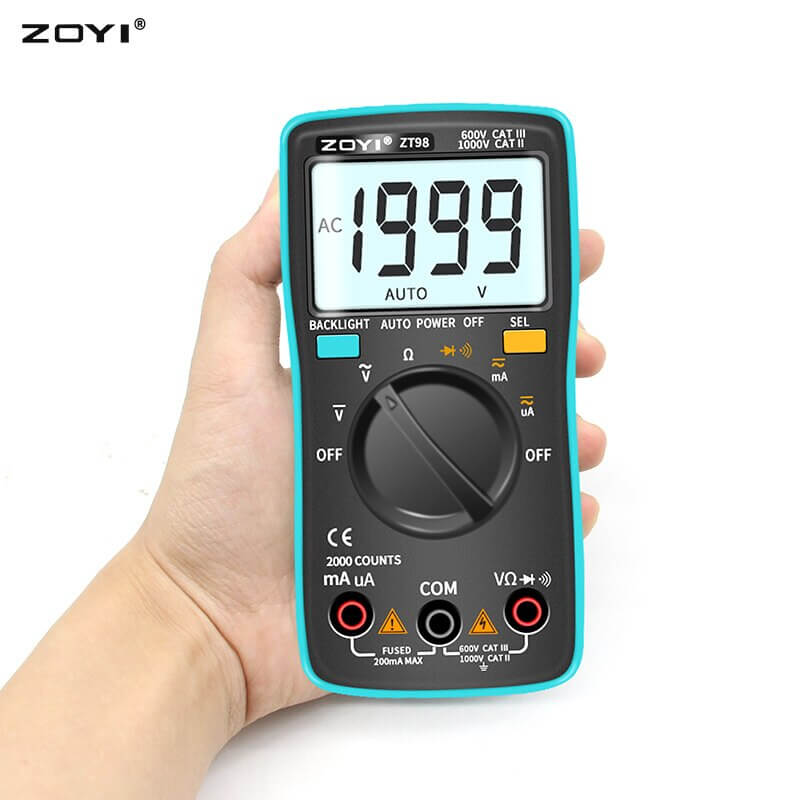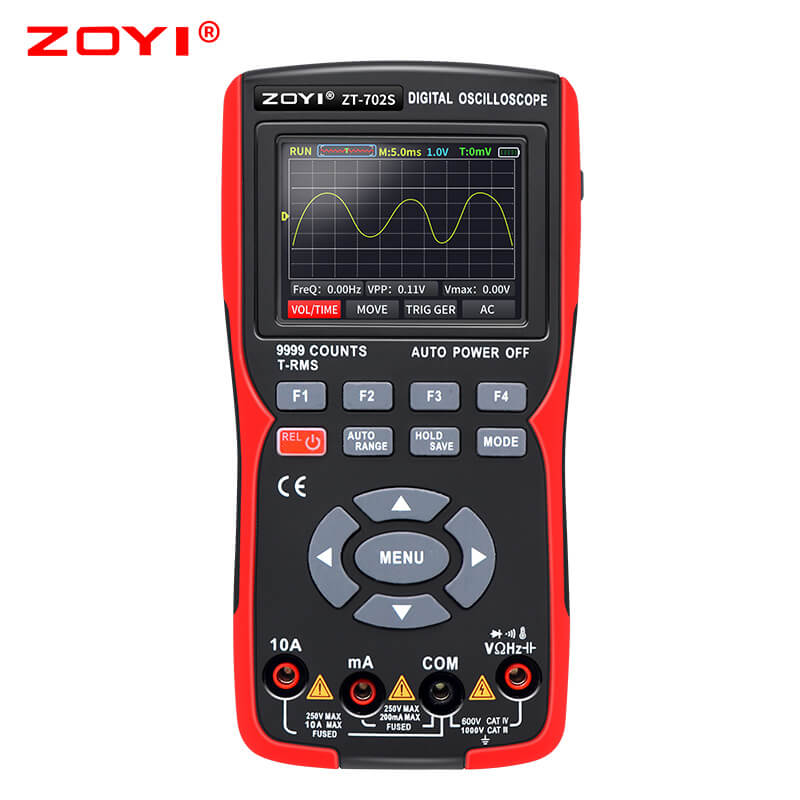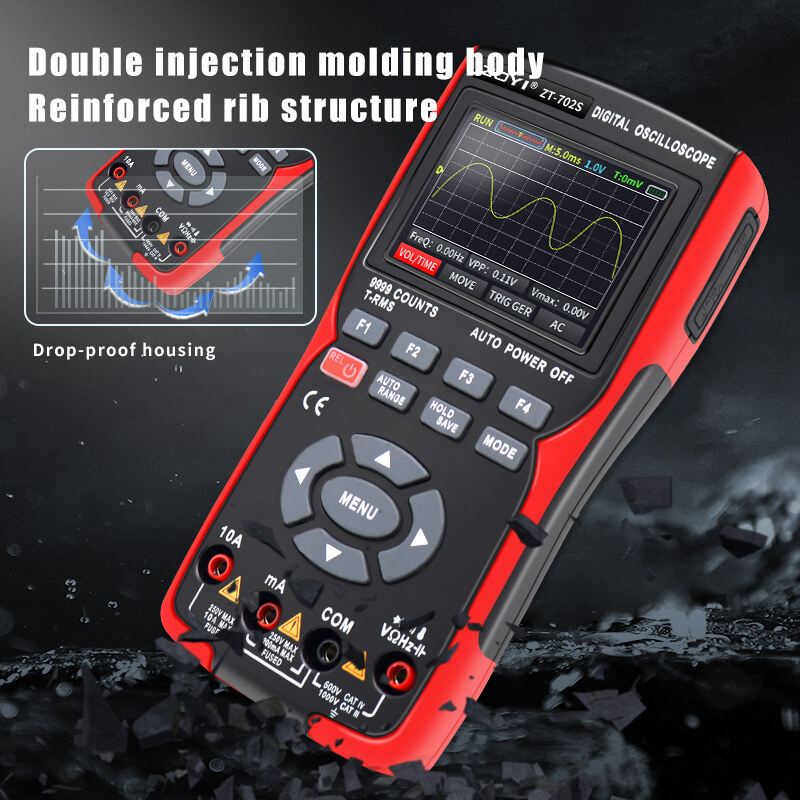
Have you ever wondered how a straightforward concept, such as a digital multimeter, develops into a finished good that is prepared for sale? Any electrician’s toolbox must have a digital multimeter, a gadget that can measure voltage, current, and resistance. Today, we’re going to walk you through the intriguing process of turning this essential tool from an abstract idea into a physical object.
The idea for a digital multimeter is where the adventure starts. Perhaps there is a demand for a more portable, user-friendly, and adaptable instrument that can accurately measure a range of electrical properties. This journey’s initial step is carefully record this concept. Comprehensive documentation acts as a roadmap for tracking progress and establishing ownership of the concept.
What’s the First Step in Designing a Digital Multimeter?
Identifying the market need is just the beginning. The primary challenge lies in creating a product that not only meets these needs but also stands out in a highly competitive market. One way to achieve this is through innovative design.
What’s the Next Step in Digital Multimeter Design?
The next step is to carry out a comprehensive patent search after we have a well-supported concept for the digital multimeter. To make sure that our multimeter design does not violate any active patents, it is imperative to complete this stage. Additionally, knowing what is already available helps us to have a better idea of the multimeter market’s environment of competition.

How Important Is Market Analysis in the Development of a Digital Multimeter?
In order to create a digital multimeter, market research is essential. It offers crucial details about future customers, their preferences, and current multimeter industry trends. This information is crucial for creating a multimeter that not only satisfies market demands but also foresees emerging trends.
How Important is Customer Satisfaction in the Design Process?
In the design phase, the team also considers customer satisfaction. This includes offering a one-year warranty and product replacement rather than repair in case of issues. All these features aim at providing more value at the same price and lower prices for the same quality compared to competitors.
How Do We Make a Digital Multimeter Prototype?
Our team of seasoned engineers then starts work on creating a digital multimeter prototype after gathering market research. This prototype, which is the first version of the product, is an essential tool for spotting and fixing design flaws early in the development process, which will save a lot of time and money in the long run.

Why Should We Think About Patenting a Digital Multimeter?
It’s time to think about applying for a patent once a functional prototype of the digital multimeter is complete and a viable market has been located. An exclusive design and functionality of the digital multimeter are legally protected by a patent, which also greatly increases the digital multimeter’s marketability and potential profitability.
How Can a Digital Multimeter Be Marketed?
The final obstacle in our path is the marketing of the patented digital multimeter. This process requires developing a strong business strategy, deciding whether to launch a new company or collaborate with an already one, and figuring out the best approach to market the multimeter. It also involves preparing an effective pitch and presentation to entice possible investors or clients.

Conclusion
To sum up, the process of developing a digital multimeter from a simple notion to a usable product is meticulous and fascinating. It entails several carefully considered processes, each of which is essential to ensuring that the finished product not only meets market demands but also outperforms the competition in terms of both value and quality.
What’s the First Step in Designing a Digital Multimeter?
The inception of a digital multimeter design starts with an idea. This idea emerges from recognizing a gap or a need in the market – perhaps for a more compact, accurate, or user-friendly multimeter.
What’s the Next Step in Digital Multimeter Design?
The next crucial step is to meticulously document this idea. This documentation, whether in digital form or on paper, serves as a blueprint for the multimeter design and helps track progress as the idea evolves. It also provides evidence of originality, which is crucial in establishing ownership of the idea.
How Important Is Market Analysis in the Development of a Digital Multimeter?
How Important is Customer Satisfaction in the Design Process?
A design focused on customer satisfaction results in a product that is user-friendly, functional, and reliable. It fosters customer loyalty, encourages repeat purchases, and drives positive word-of-mouth, ultimately leading to increased market share and profitability. In essence, customer satisfaction is the cornerstone of successful product design.
How Do We Make a Digital Multimeter Prototype?
Why Should We Think About Patenting a Digital Multimeter?
Patenting a digital multimeter provides legal protection for the invention, preventing others from copying or selling the design without consent. It safeguards the intellectual property, potentially increases profitability by enabling higher pricing due to uniqueness, and enhances the product’s selling power by adding monetary value to the intellectual property. Moreover, a patent can establish a competitive edge in the market and attract potential investors or partners. In essence, patenting is a crucial strategy in the commercialization of a digital multimeter.
How Can a Digital Multimeter Be Marketed?
A solid marketing plan can include digital marketing strategies such as SEO, Google Ads, and social media promotions. Offline strategies can include participation in trade shows, direct mail, and print advertising. The key is to communicate the unique benefits of the multimeter, such as its accuracy, versatility, or user-friendliness. Customer testimonials and case studies can also be powerful tools in marketing the product.

